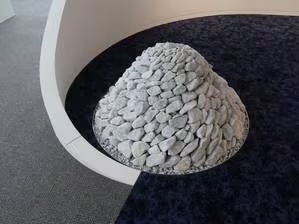
LIMEX is used in a wide range of products, such as beverage cups, food containers, and labels. (Image courtesy of TBM)
Read the full story on Japan 2 Earth - LIMEX: A Limestone-Based Paper and Plastic Alternative Sees Widespread Adoption
TBM is a Tokyo-based startup that developed a new material called LIMEX. The company is increasingly gaining attention for this accomplishment. LIMEX, made primarily from limestone, is 100% domestically sourced. It can serve as an alternative to both plastic and paper. Products made with LIMEX can significantly reduce environmental impact. More than 10,000 companies and local governments have already adopted it.
Drastic Cut in Emissions
LIMEX is created by mixing inexpensive, domestically abundant limestone with a petroleum-based resin. For Japan, which relies heavily on imports of natural resources, LIMEX is an ideal material. To date, mixing other materials with limestone has been difficult. TBM successfully developed its proprietary blending and mixing techniques after years of research.

Compared to widely used petroleum-based plastics, TBM reports that LIMEX emits fewer greenhouse gases like CO2. This figure exceeds a 50% reduction throughout the material's lifecycle from material procurement to disposal.
Similar reductions can be seen for water usage. Producing one ton of paper generally requires around 100 tons of water. But LIMEX's production process uses almost no water — reducing usage by 97% compared to paper. LIMEX is also water-resistant and hard to tear.
Continue reading the full story on Japan 2 Earth to read more about TBM's emissions-cutting plastic and paper alternative.
And find more great articles on the environment and the challenges of achieving the SDGs on our affiliated website Japan 2 Earth (J2E), sparking a transition to a sustainable future.
RELATED:
- Rice-Based Bioplastics: A Sustainable Alternative with Added Advantages
- Japan’s Plastic Recycling: The Unseen Reality
- Bioplastics: Japanese SMEs Leading Advancements in the Industry
(Read the article in Japanese.)
Author: Katsufumi Sato







